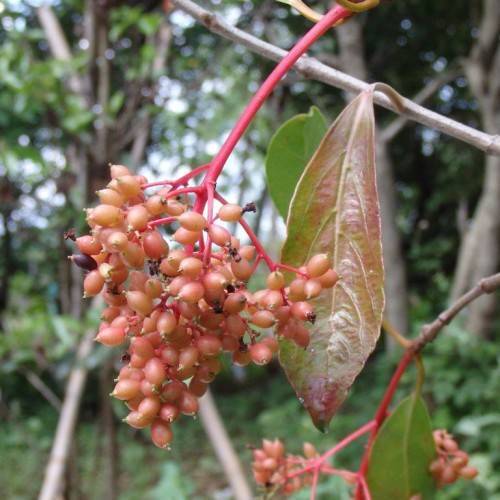
sweet viburnum
Viburnum odoratissimum var. awabuki
Cycle:
Perennial
Watering:
Average
Hardiness Zone:
7 - 9
Flowers:
Flowers
Sun:
Full sun,part shade
Fruits:
Fruits Ready In
Edible:
Yes
Leaf:
Yes
Growth Rate:
High
Maintenance:
Low
Drought Tolerant:
Yes
Salt Tolerant:
Yes
Care Level:
Medium
watering
Sweet viburnum plants should be watered once a week, allowing the soil to dry out slightly between waterings. During the summer months, the soil may need more water than the cooler months. When watering, aim to thoroughly saturate the soil down to a depth of 8-10 inches. Use a watering can, garden hose, or a soaker hose to water the sweet viburnum plant. If the leaves begin to wilt or look dry, the plant may need more water. During the growing season, supplement with liquid fertilizer every 3-4 weeks.
sunlight
Sweet viburnum requires a significant amount of sun to grow and reach its full potential. Optimal sunlight would be 4 to 6 hours of direct and/or indirect sunlight each day. When the weather is nice and the sun is out, direct sunlight is best for this species, however during periods of extreme heat, it is best to provide indirect sunlight (i.e. shade) until the temperatures become more moderate. If sun exposure is limited, sweet viburnum may not reach its full potential and flowering will not be as lush or abundant.
pruning
Sweet viburnum should be lightly pruned after flowering, and more heavily pruned annually during the winter months when it is dormant. Pruning should remove dead, diseased or damaged growth, as well as undesirable suckers and crossed branches. To control size and shape, prune Sweet Viburnum down 1-third of its size (or remove entire stems if necessary). It is a good practice to prune Sweet Viburnum lightly throughout the season to give a neat shape and remove dead or weak growth.
